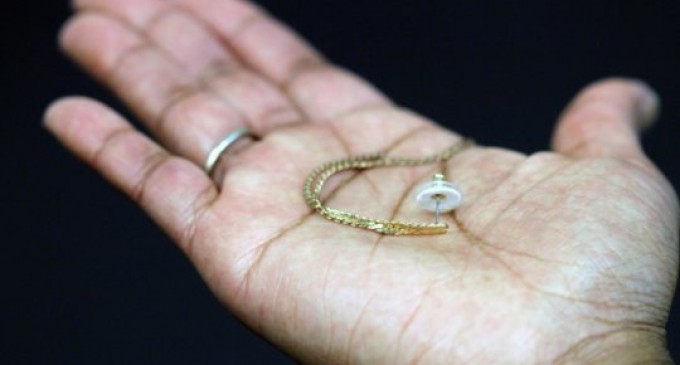Washington, March 27: Family planning for women might one day be as simple as putting on jewellery, according to scientists who have developed a technique for administering contraceptives through earrings, rings or necklaces.
The contraceptive hormones are contained in patches applied to portions of the jewellery in contact with the skin, allowing the drugs to be absorbed into the body, according to a report published in the Journal of Controlled Release.
Initial testing suggests the contraceptive jewellery may deliver sufficient amounts of hormone to provide contraception, though no human testing has been done yet.
A goal for the new technique is to improve user compliance with drug regimens that require regular dosages. Beyond contraceptives, the jewellery-based technique might also be used for delivering other drugs through the skin.
“The more contraceptive options that are available, the more likely it is that the needs of individual women can be met,” said Mark Prausnitz, at the Georgia Institute of Technology in the US. “Because putting on jewellery may already be part of a woman’s daily routine, this technique may facilitate compliance with the drug regimen. This technique could more effectively empower some women to prevent unintended pregnancies,” said Prausnitz.
Contraceptive jewellery adapts transdermal patch technology that is already used to administer drugs that prevent motion sickness, support smoking cessation, and control the symptoms of menopause, but has never been incorporated into jewellery before.
Contraceptive patches are also already available, but Prausnitz believes pairing them with jewellery may prove attractive to some women — and allow more discreet use of the drug delivery technology.
Researchers tested the concept on animal models, first on ears from pigs. Test patches mounted on earring backs and containing the hormone levonorgestrel were also applied to the skin of hairless rats. To simulate removal of the earrings during sleep, they applied the patches for 16 hours, then removed them for eight hours.
Testing suggested that even though levels dropped while the earrings were removed, the patch could produce necessary amounts of the hormone in the bloodstream. The earring patch tested by the researchers consisted of three layers. One layer is impermeable and includes an adhesive to hold it onto an earring back, the underside of a wristwatch or the inside surface of a necklace or ring. A middle layer of the patch contains the contraceptive drug in solid form. The outer layer is a skin adhesive to help stick to skin so the hormone can be transferred. Once in the skin, the drug can move into the bloodstream and circulate through the body.
